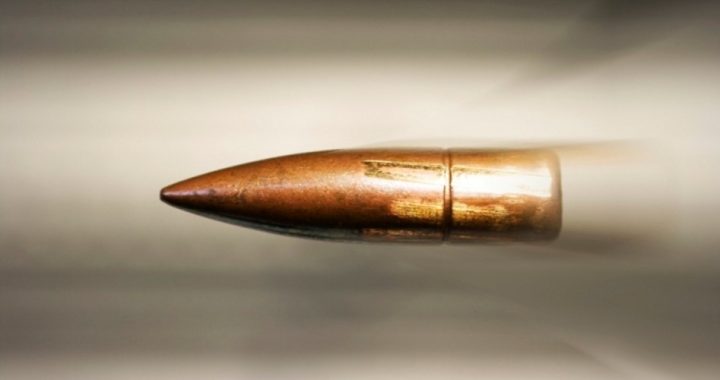
As the technology facilitating the expansion of the surveillance state becomes more advanced, the need for proximity to the target of the surveillance diminishes. For example, very soon drones will be equipped with lasers that can penetrate walls, map the interior of a home or other building, and scan a targeted individual’s genetic code from 50 yards with dizzying speed and accuracy. Additionally, the ability to keep drones perpetually airborne is being engineered thanks to multi-million dollar research and development grants offered by the Pentagon to companies on the edge of technological advancement.
One such grant was recently awarded by DARPA (the secretive research and development agency inside the Pentagon) to a company working on reducing the size and increasing the power of laser-based optics used by snipers. Earlier this week, DARPA awarded Cubic Corporation $6 million to develop a “laser-emitting targeting computer” for American military snipers. According to a story in Wired, the “goal is to reduce the number of calculations the sniper and his teammate — a spotter — have to do before they can make an accurate shot.”
The government wants the device not only to have pinpoint accuracy, but to be small enough to fit on the sniper’s weapon, eliminating the need for the spotter altogether and enabling the shooter to identify and kill the target from heretofore impossible distances. Cubic Corporation is accustomed to making historic strides in distance-measuring devices. The company’s website boasts that in the 1960s its engineers created “Electrotape Distance Measuring Instrument — the world’s first commercial distance surveying system to provide centimeter accuracy from 100 meters to 50 kilometers.”
As laudable as that is, the company is being called on to do something much more impressive. This über-powerful scope is called appropriately the One Shot XG. Although Cubic Corporation has not specifically described their product, DARPA’s request for proposals mandates that the instrument be a “compact observation, measurement, and ballistic calculation system” that will allow the sniper to make kill shots “under crosswind conditions, at the maximum effective range of current and future weapons.”
Within 15 months, DARPA expects delivery of a scope capable of calculating “crosswind profile, direction, range, temperature, atmospheric pressure, humidity, cant and pointing angles, etc.” as close to real time as possible and then instantly delivering that data to the sights of the gun and a display screen viewed by the sniper. And, it must be capable of doing all of this in the dark. The device must also have a range of 2 kilometers (1.24 miles) and must have a first round hit probability of 60-90 percent at that range.
In previous phases of the One Shot XG program, the lasers used by the scope were overheating and the effective first round kill range was reduced to 300 meters “under starlight conditions.” Also, battery life was unacceptably short (less than 20 minutes), the instrument was too heavy (4 kg, as opposed to the .66 kg required by the Pentagon), and the readings were washed out in direct sunlight.
While working on the perfect super sniper scope, DARPA is simultaneously working on engineering a bullet that will “navigate itself a full mile before successfully nailing its target.” This sophisticated type of ordnance is not science fiction; it is a technological reality. Most of the work perfecting these self-guided bullets is being performed at Sandia National Laboratories as part of their own research project. A report released earlier this year revealed that the scientists had engineered a prototype that was effective at a distance of up to 2 kilometers.
According to a story about the bullet in Wired:
Each self-guided bullet is around 4 inches in length. At the tip is an optical sensor, that can detect a laser beam being shone on a far-off target. Actuators inside the bullet get intel from the bullet’s sensor, and then “steer tiny fins that guide the bullet to the target.” The bullet can self-correct its navigational path 30 times a second, all while flying more than twice the speed of sound.
The demonstration of the smart bullet technology took place in January, but replicating the success with the super sniper scope is apparently taking a bit longer. The call for proposals published by DARPA indicates that they had hoped to take possession of the One Shot XG as early as 2009. As it stands today, the date for delivery of the device is slated for late 2013.
Self-guided bullets that hit a target over a mile away and scopes that can hone in on a target from that same distance are just the type of small, light, and lethal weaponry that are perfectly suited to be attached to drones deployed for the purpose of finding and destroying anyone suspected of posing a threat to the homeland. Perhaps the most frightening implication of this is that all of this remote delivery of death can be done with very limited human participation.



